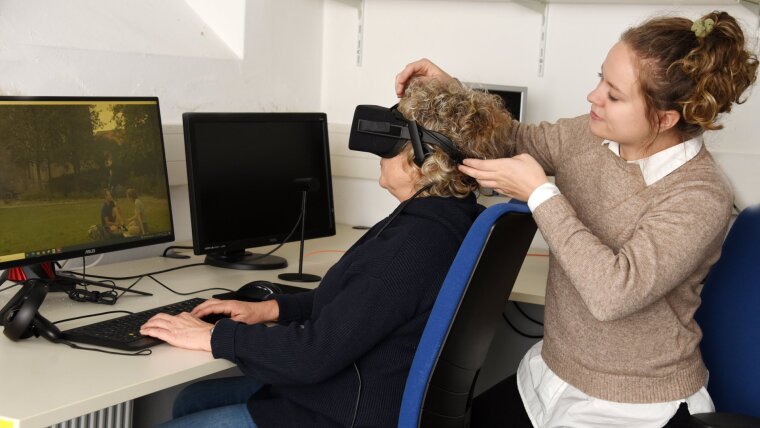
»It all happened far too quickly« is a common response in crime thrillers when eyewitnesses are questioned about the details of a crime. Was the perpetrator tall or short, young or old, what colour jacket did they wear? And even if the witnesses are able to give a detailed description of the perpetrator, there are often mistakes—both in crime fiction and in reality. Psychologists are investigating why people so often remember things »incorrectly«. A young researcher from the University of Jena has now created novel 3D study material to analyse eyewitness accounts.
By Sebastian Hollstein
Eyewitness statements are one of the key sources for identifying perpetrators—and one of the most error-prone. For example, the Innocence Project—an organisation that works to clear up miscarriages of justice in the US—states that incorrect eyewitness statements played a role in two out of three cases in which it was able to secure the release of people who had been wrongly convicted.
Why eyewitnesses are so often wrong
Further research is needed to find out why eyewitnesses are so often wrong, and this will require extensive visual material. Psychologist Ulrike Kruse of Friedrich Schiller University Jena has now created such visual aids, through the unusual method of shooting mini crime stories. Together with her colleague, Prof. Stefan R. Schweinberger, she reports on her work in the current issue of the specialist magazine PLOS ONE.
»I’ve been working intensively on this topic for years and I continually find that there’s hardly any material available for study programmes in this field, because images are mostly subject to data protection and cannot easily be distributed,« says Ulrike Kruse. »For this reason, I decided to create such stimuli myself, use them for my own studies and, above all, make them available to colleagues worldwide.«
To this end, Kruse shot six short film sequences with the support of amateur dramatics groups, in which minor offences are re-enacted, such as pickpocketing in a busy park. In order to use Virtual Reality (VR) methods and thus make the eyewitness situations even more realistic, the psychologist also used 3D technology.
In the next step, the Jena researcher looked for 16 people who looked similar to the perpetrators in the videos, in order to photograph them for simulated identity parades and also make 3D portraits of them. »I created flyers, searched on social media and approached people personally. In total, this phase took up the most time,« says Kruse, who spent around a year on the project.
Confrontation with suspects in virtual realitv
Compiling the photo database also took such a long time because Kruse tested objectively whether the men really did look confusingly similar. For this purpose, several people watched the videos and then provided a written description of the perpetrators. In an online survey, 130 mock witnesses, as they were called, then identified the person who matched the characteristics by viewing the photos. »In such a fairness test, in the best-case scenario all the people in this virtual line-up are selected a few times because they should all fit the description. In this case, it worked very well,» says Kruse.
The Jena psychologist initially used the material for her own research. As part of her doctorate, for example, she is investigating the question of whether people who are generally good at remembering faces are also good eyewitnesses. »If this is the case, you could—put simply—subject witnesses in court to a general test of their abilities in this area and in this way better assess their credibility,« she explains. However, final results are still pending.
With the visual material she has created, the Jena researcher is exploring completely new avenues, as there have hardly been any studies to date in which the test subjects have used VR goggles to immerse themselves in virtual reality for their role as eyewitnesses.
»So far, it has turned out that it’s very difficult to remain attentive when you’re fully immersed in the situation,« says Kruse. »In one experiment, for example, fewer than a fifth of 68 participants demonstrated correct recognition.« Further research in this area is therefore urgently needed.
Original publication:
The Jena Eyewitness Research Stimuli (JERS) [...]. PLOS ONE (2023), https://journals.plos.org/plosone/article?id=10.1371/journal.pone.0295033External link